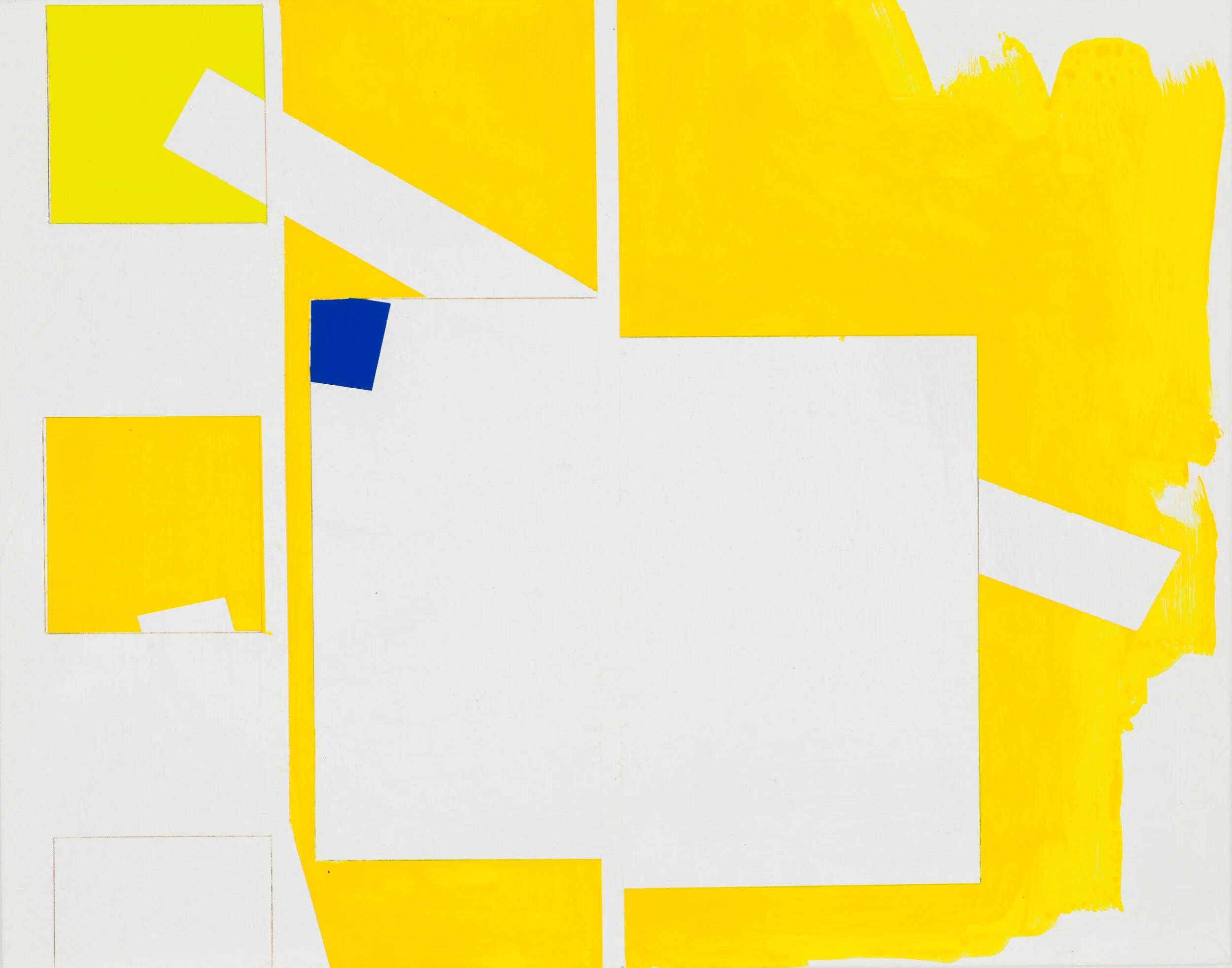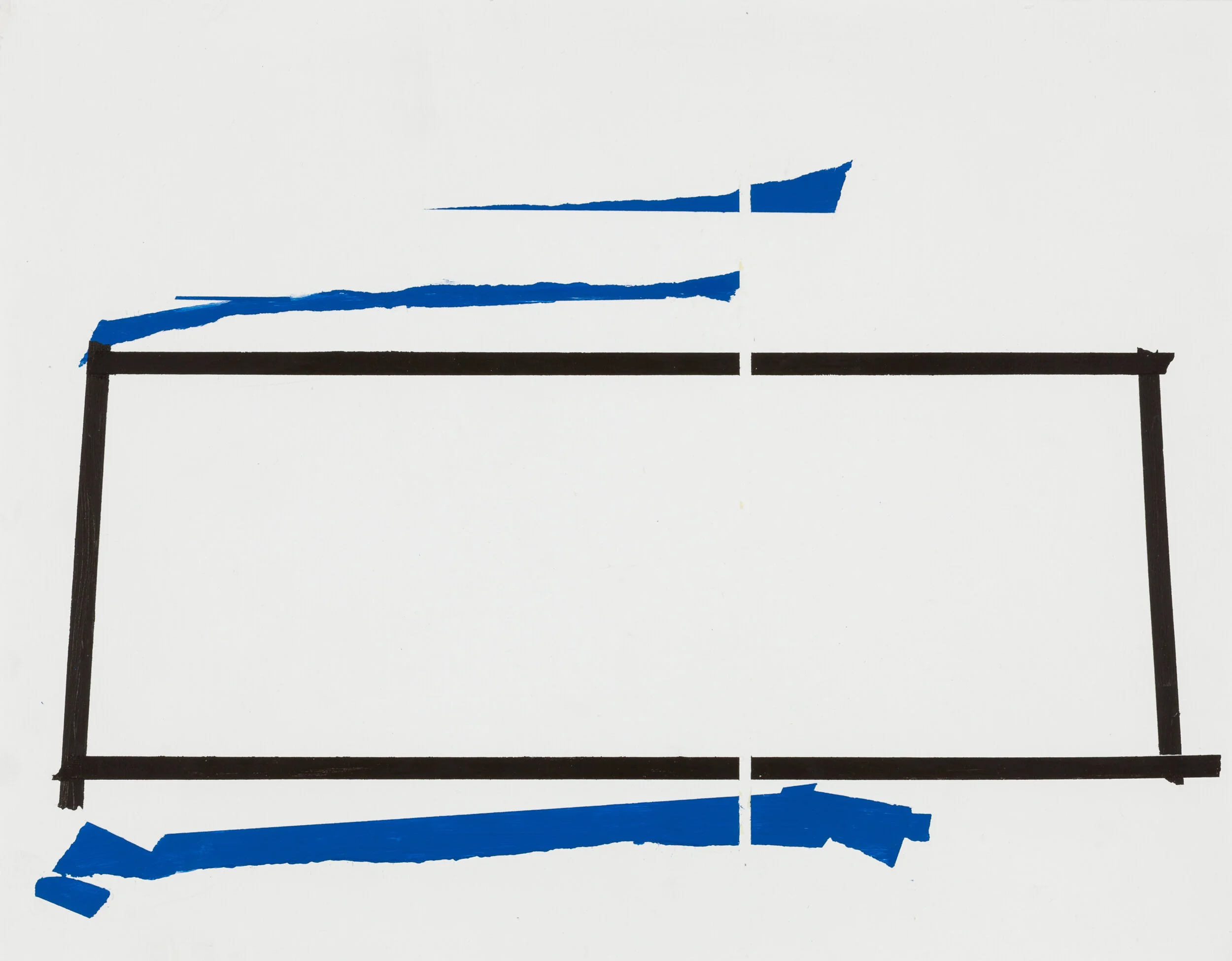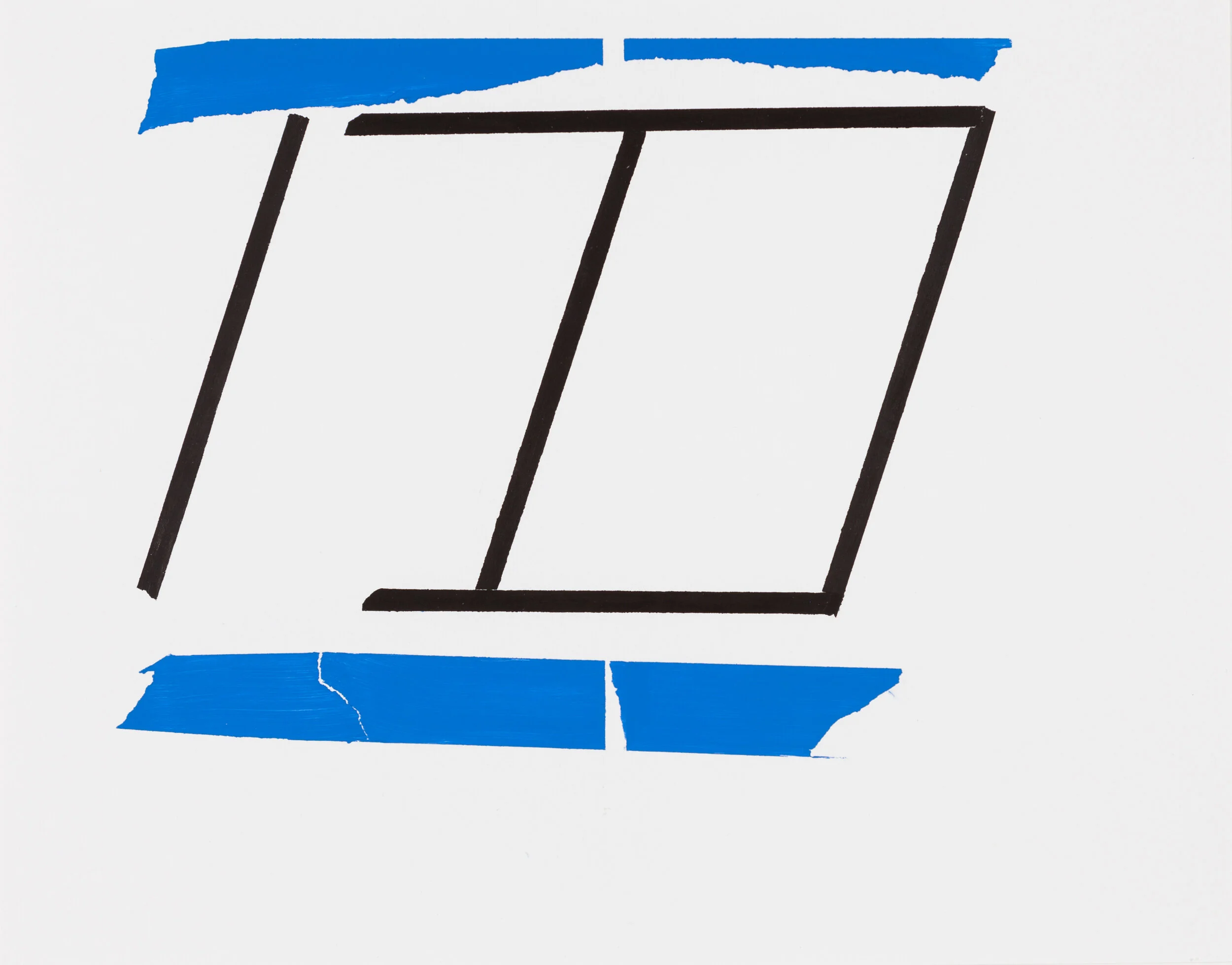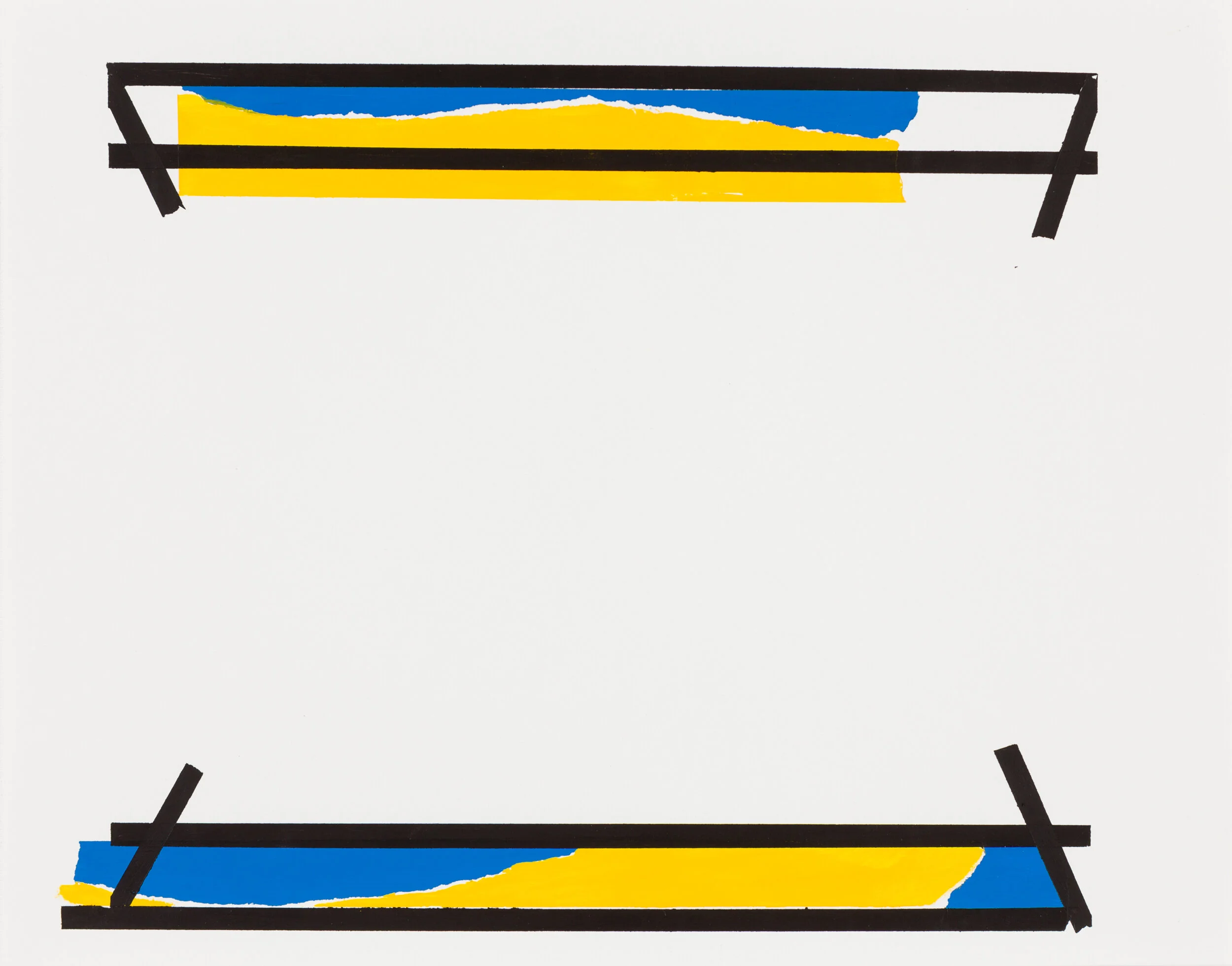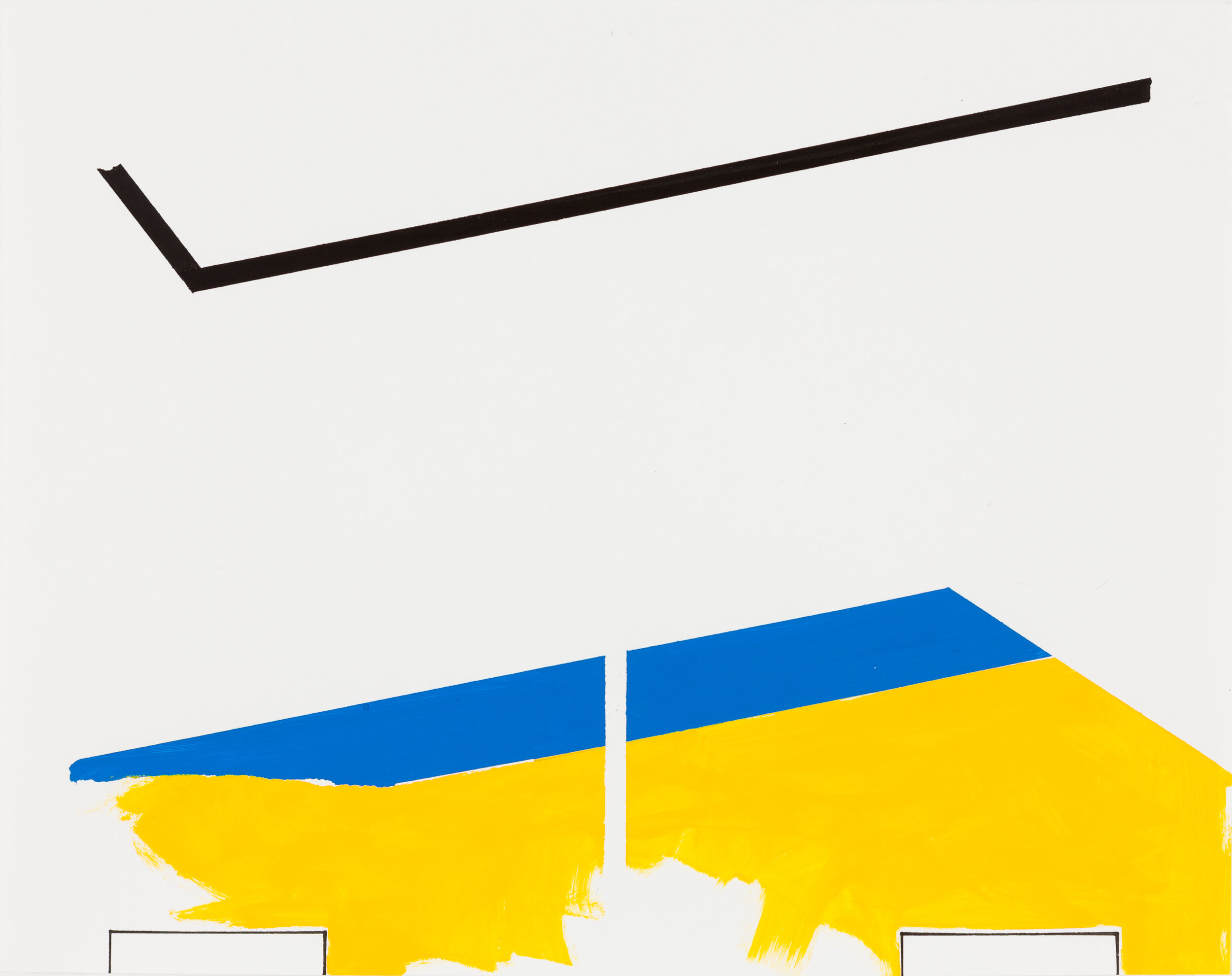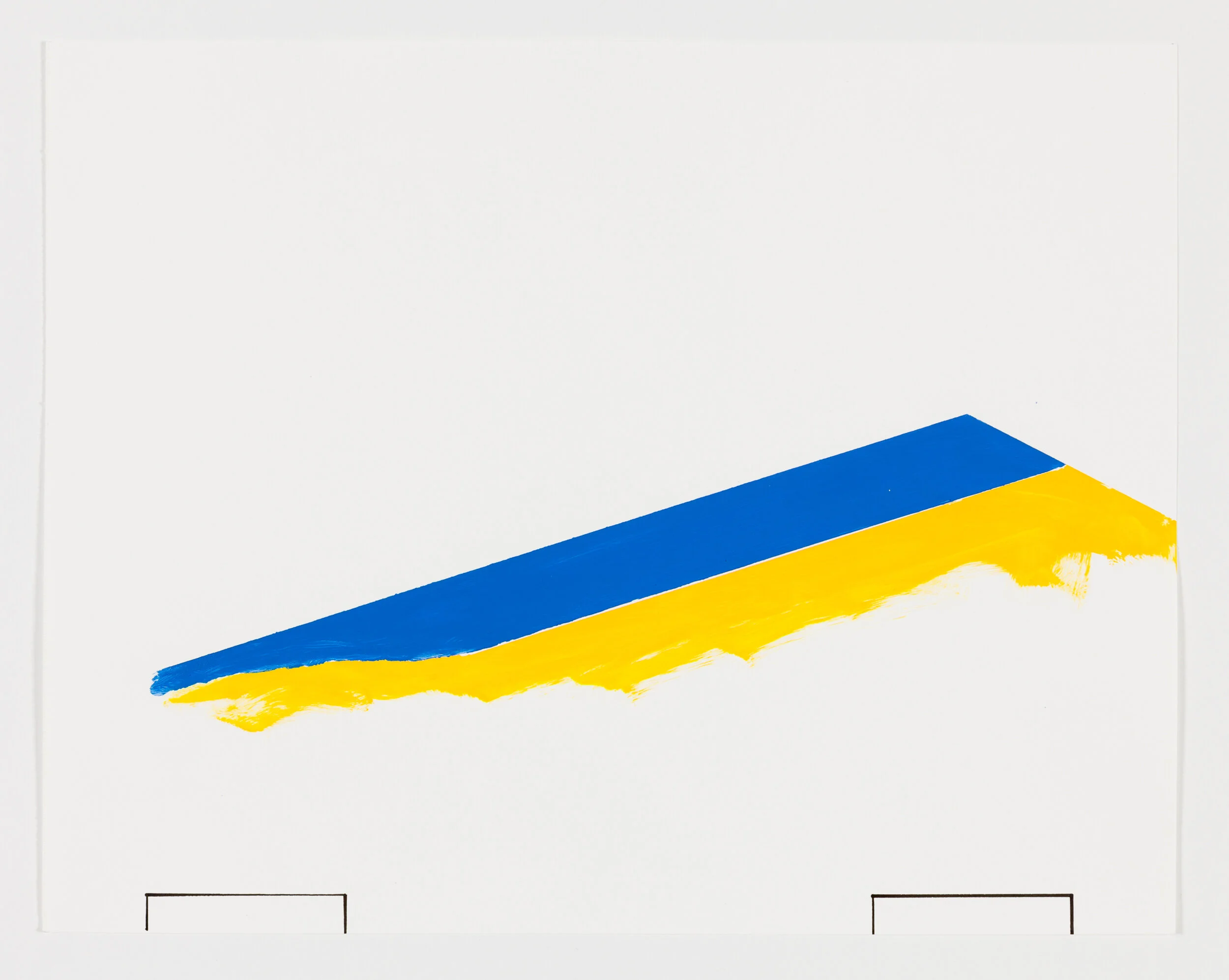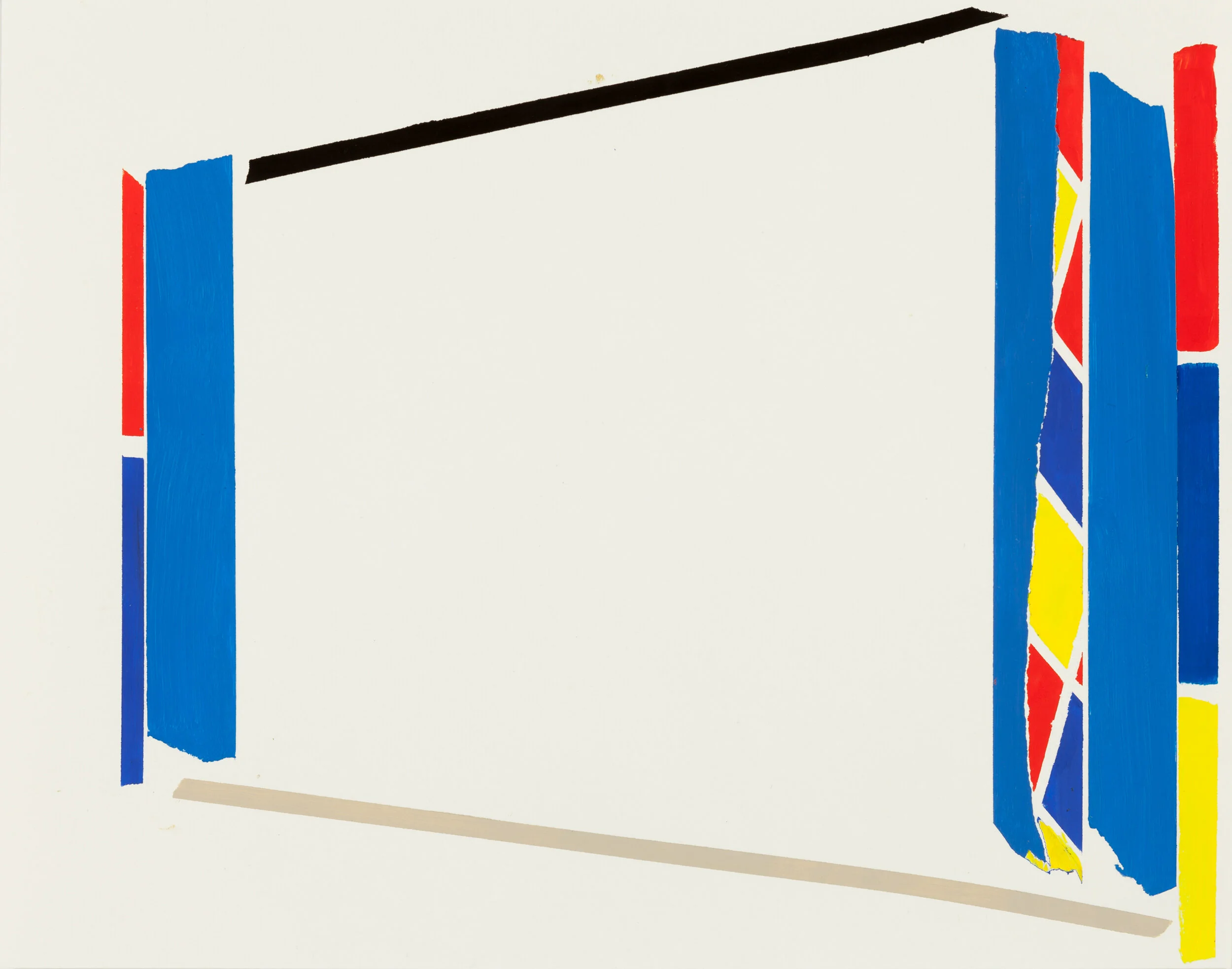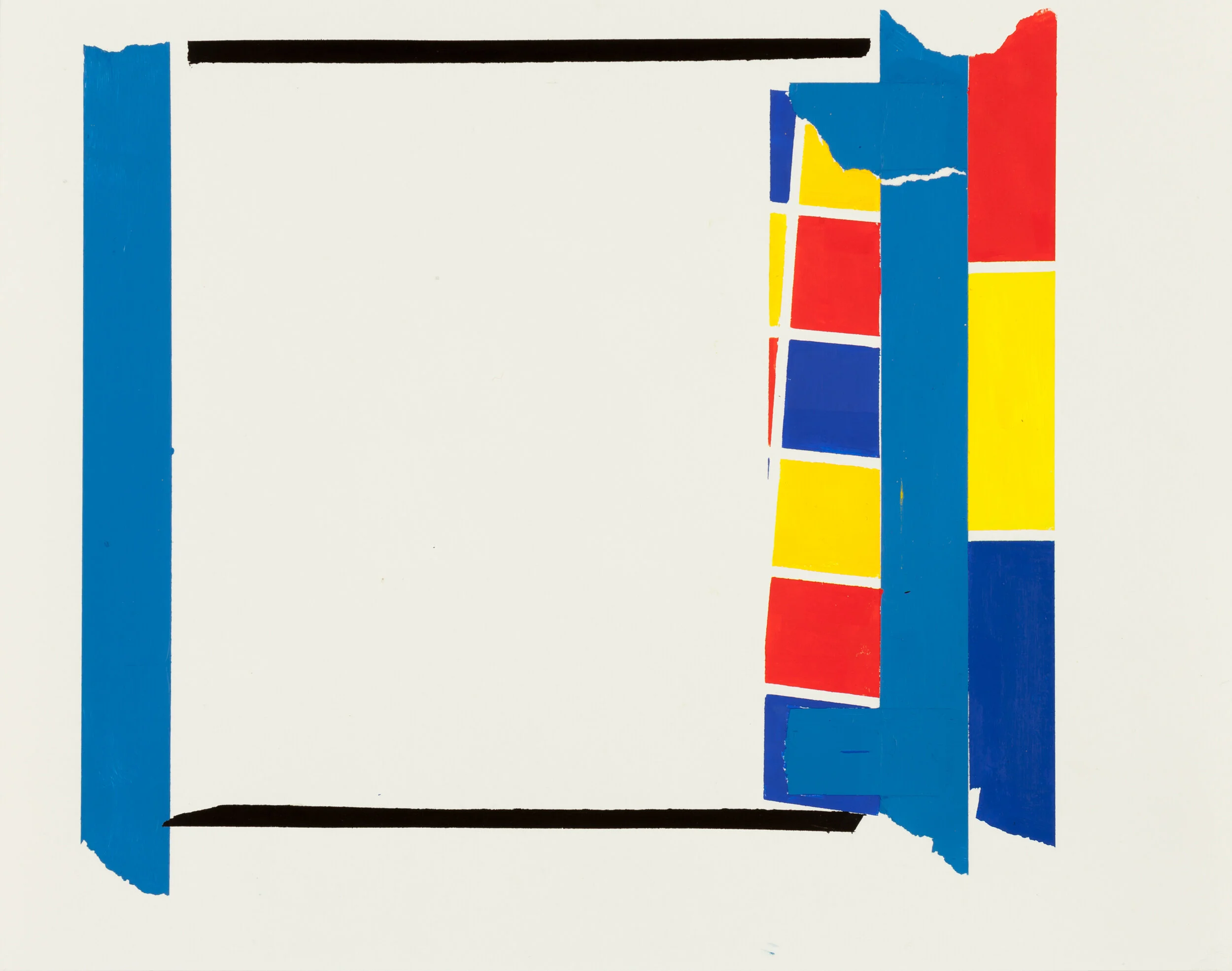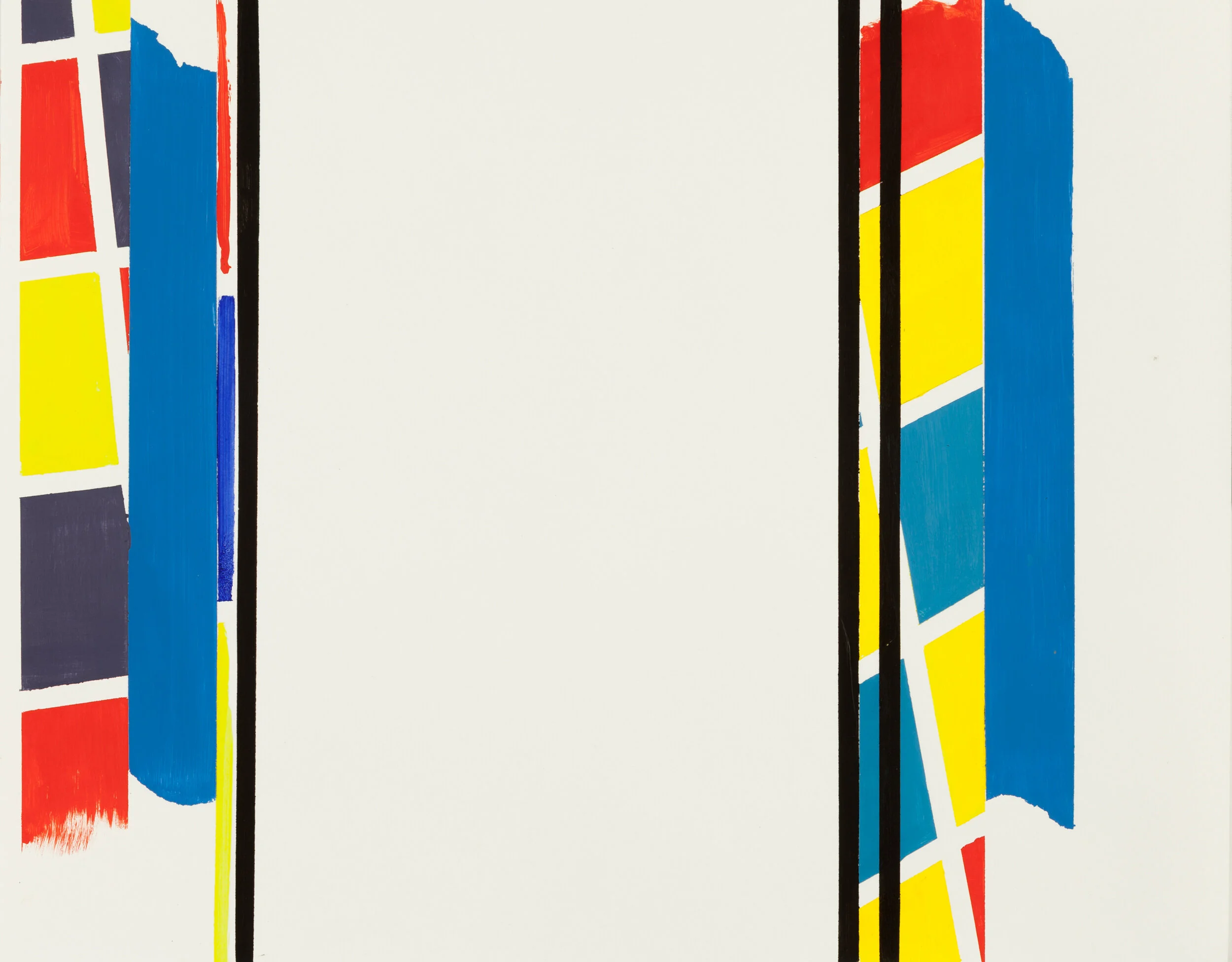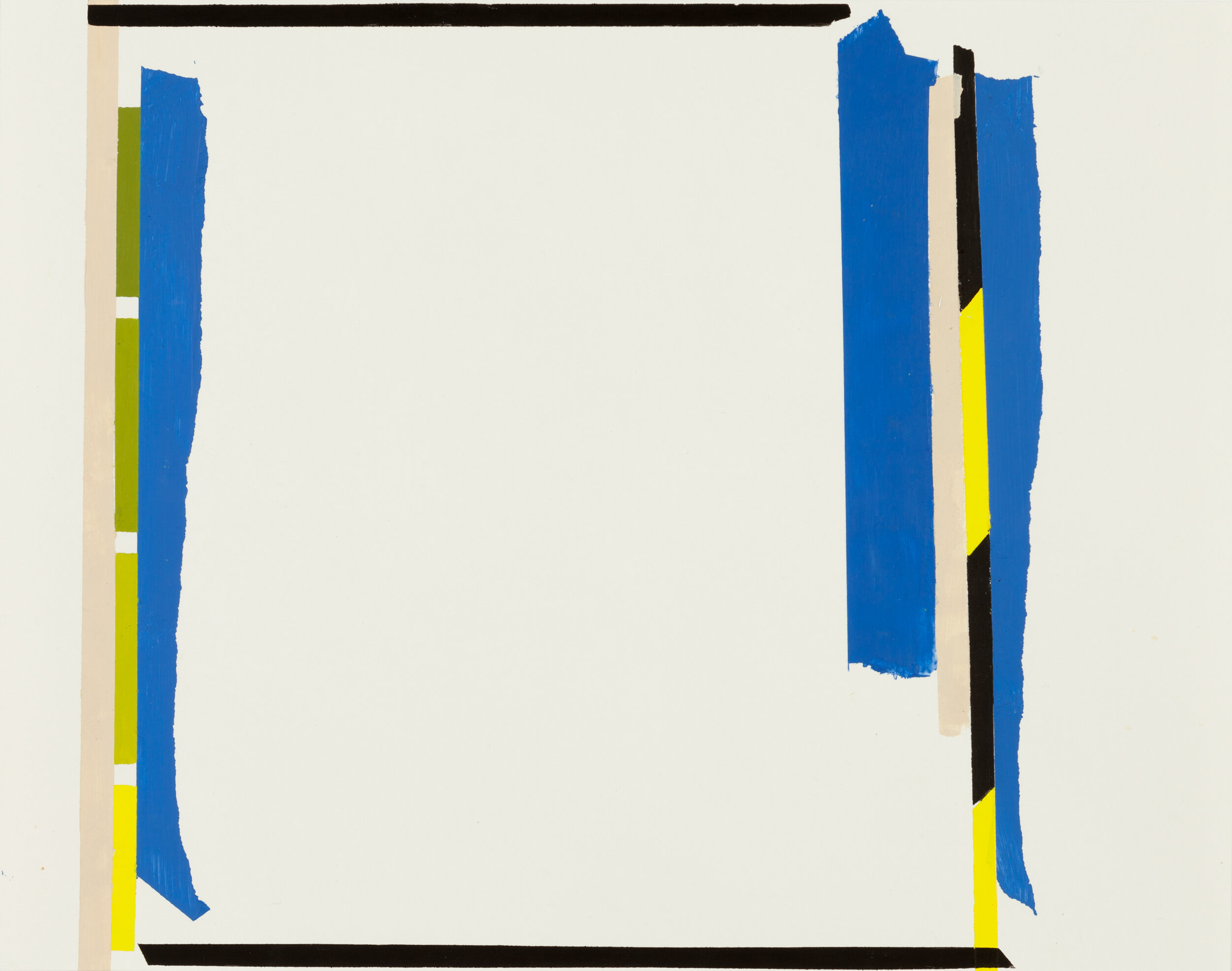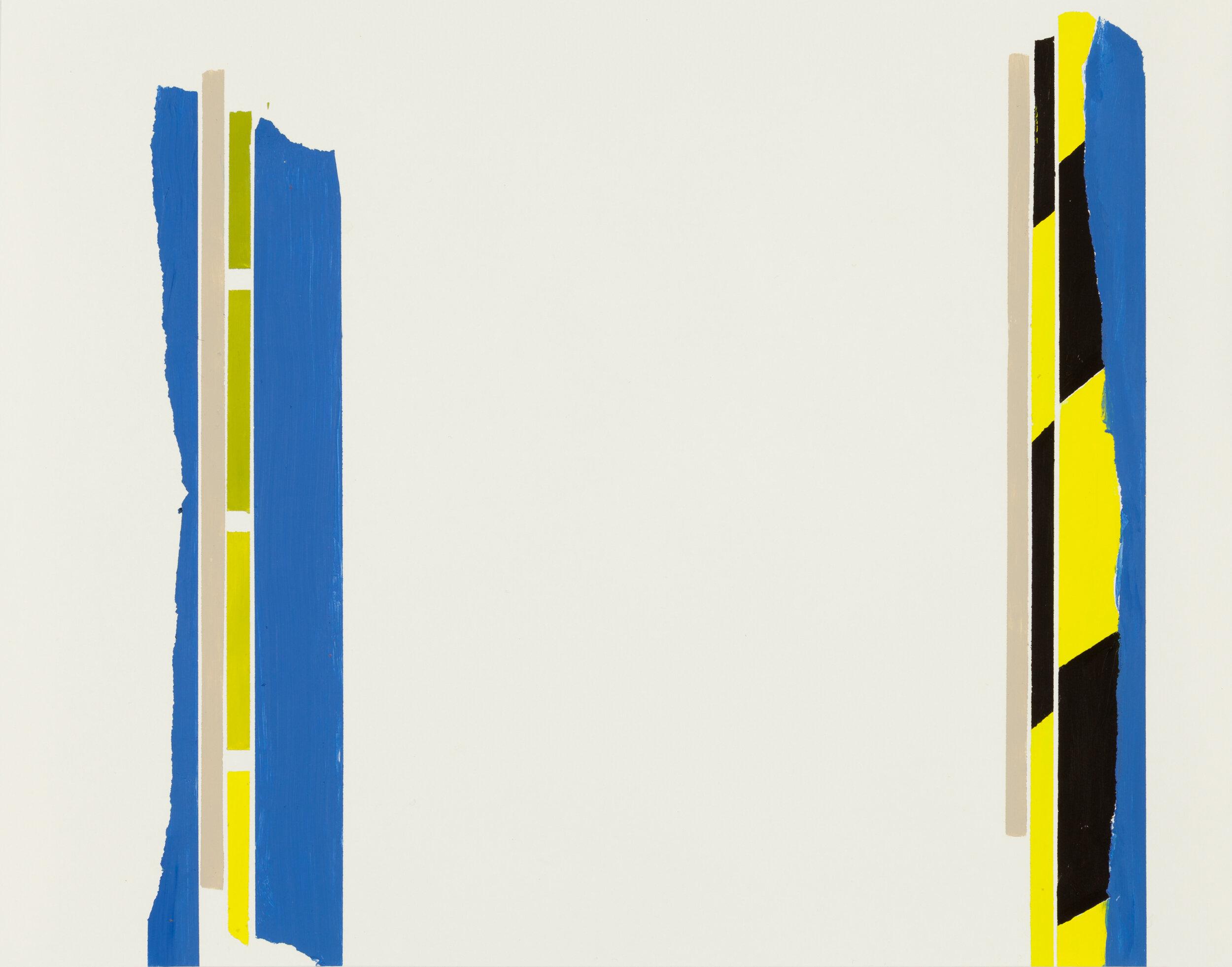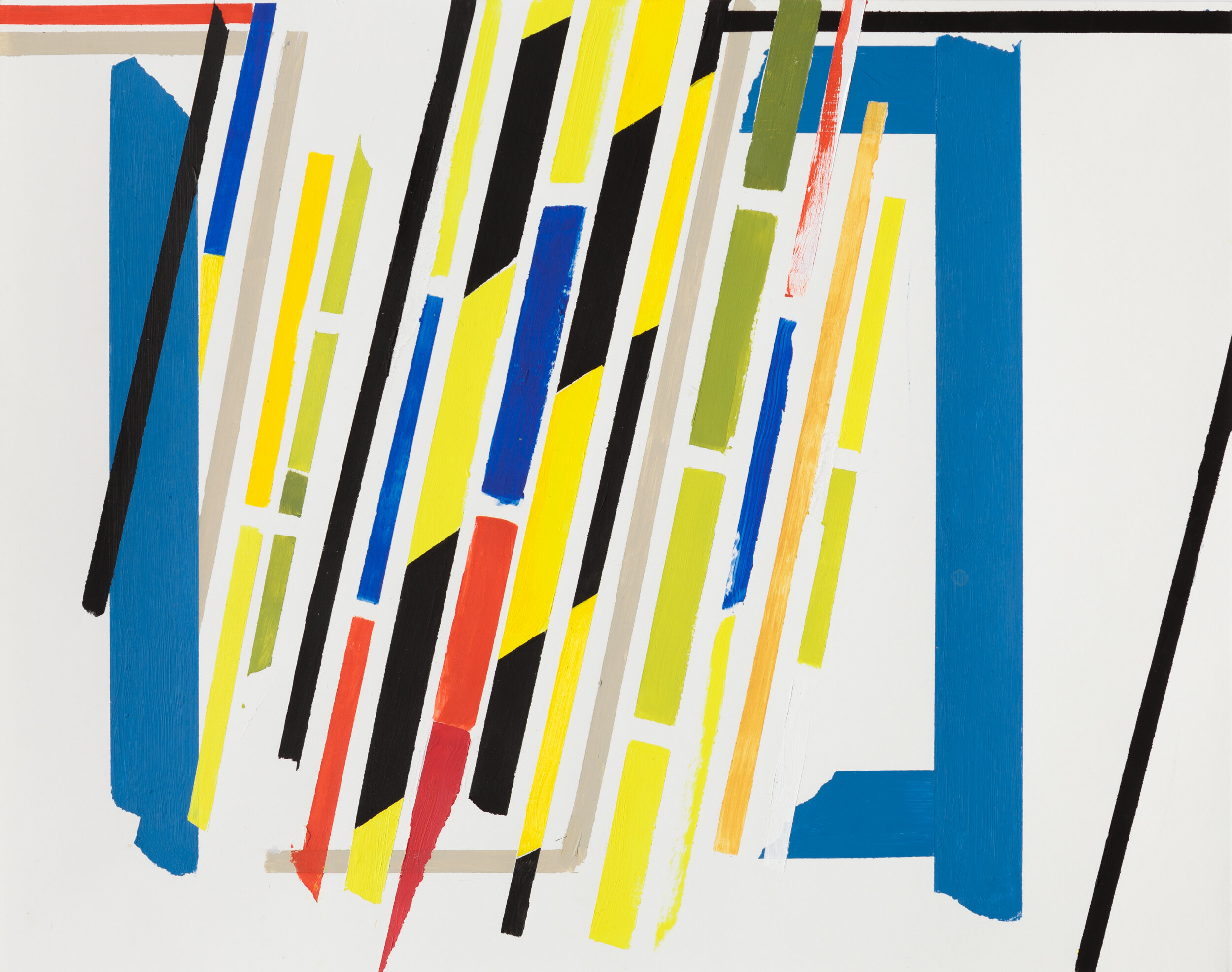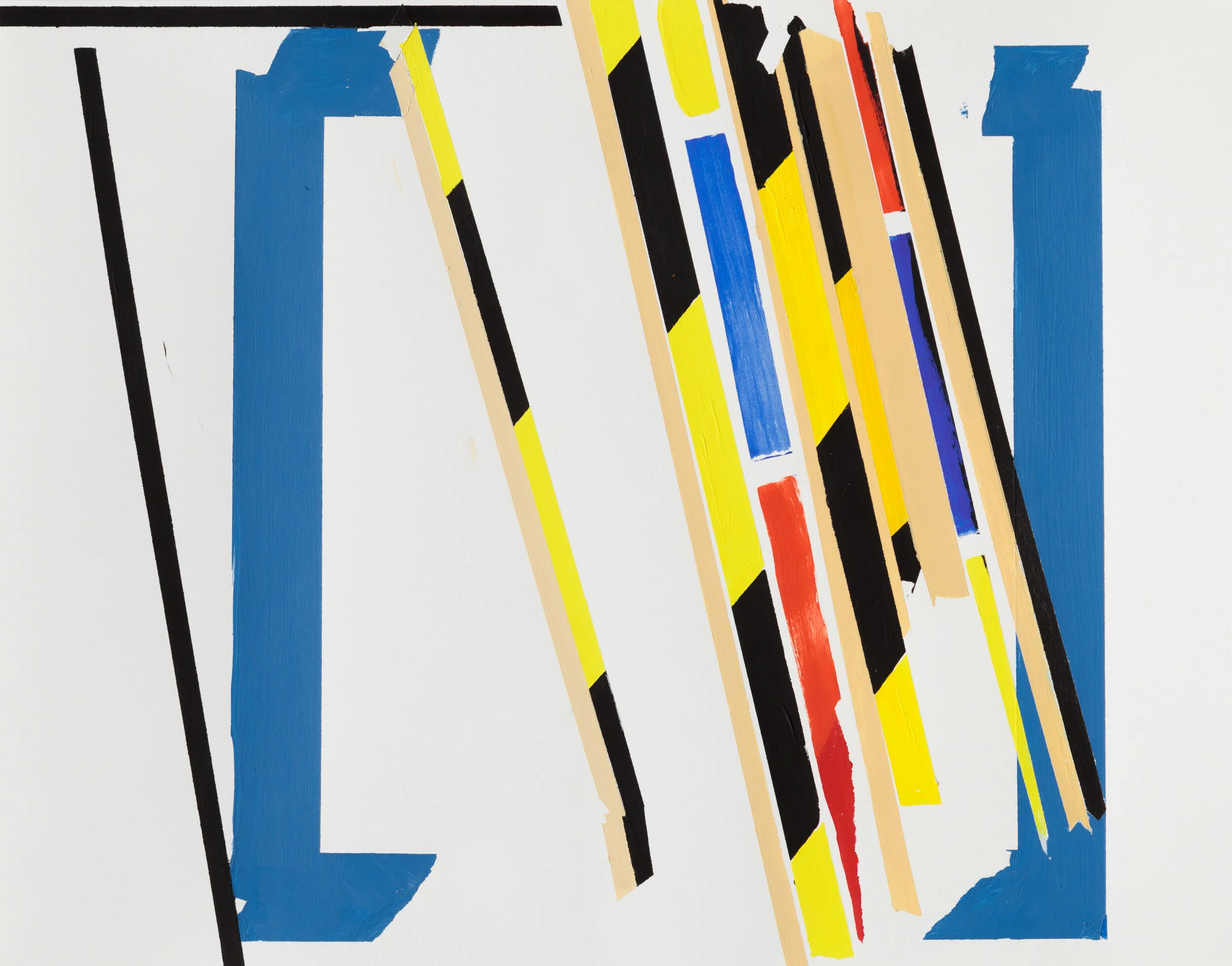Indecidability of the Sign: Frame
Acrylic on board
18”h x28 ¼” (diptych)
2000s —
on paper Frame
acrylic, some ink, 11’h x 14”w
on paper Frame: red yellow blue
acrylic, some ink, 11’h x 14”w
on paper Palette Frame
acrylic, some ink, 11’h x 14”w
Miwon Kwon has said of INDECIDABILITY OF THE SIGN: FRAME: “Congratulations, for these are between design and sign.”
The frame is a complex topic, a term with palpable reference to contexts where interpretive potentiality proliferates. Here the frame articulates a shifting set of relative relations: what is built or painted above, upon, below; left or right of a center; within, without. As a figure, edge, or field of its own, line is constructed: simulated as tape through using acrylic to imitate masking tape on panels. The frame is also more: here it is a diagram of potential conceptual frames, mental structures.



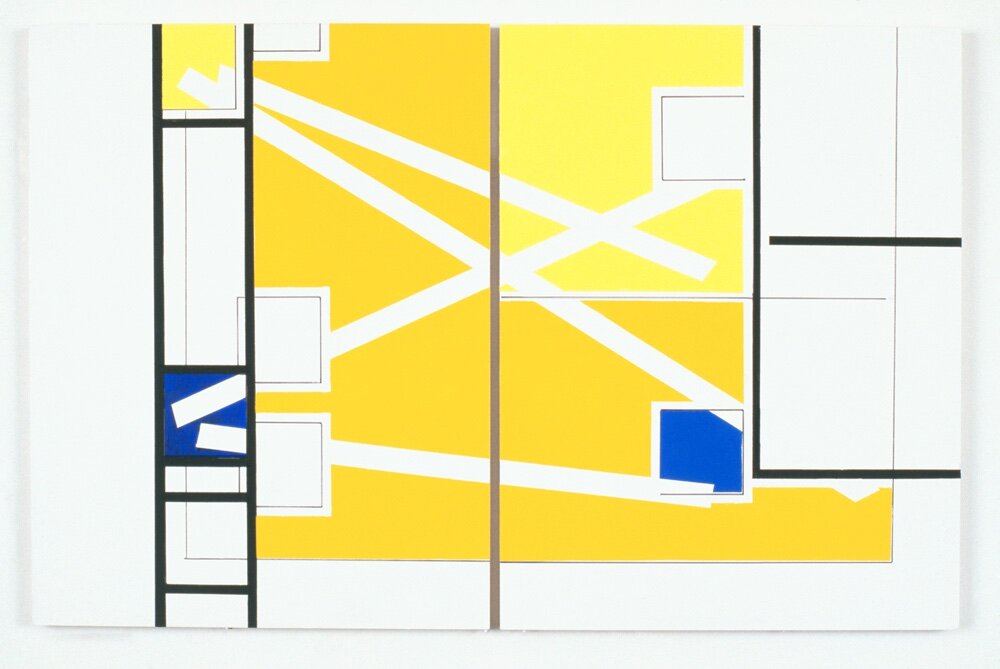
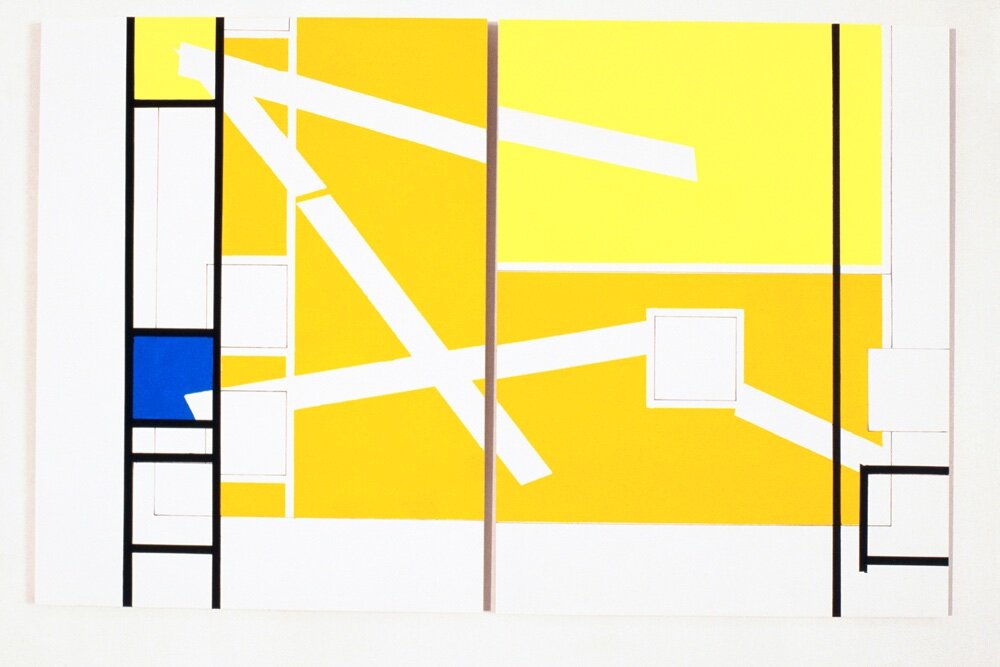

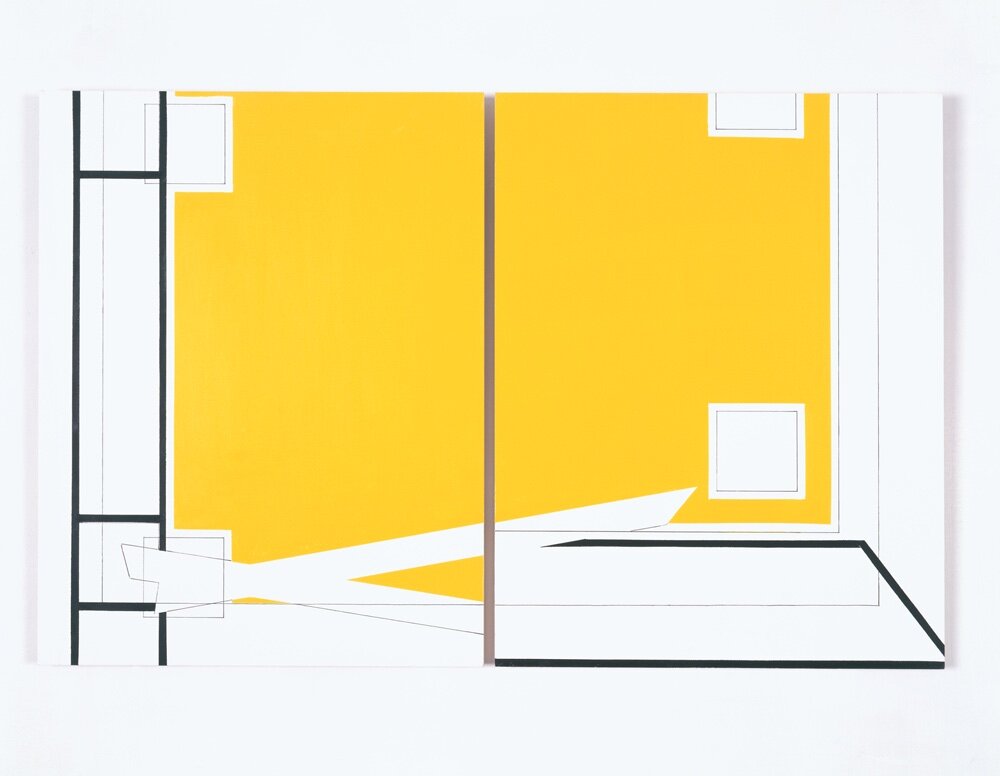
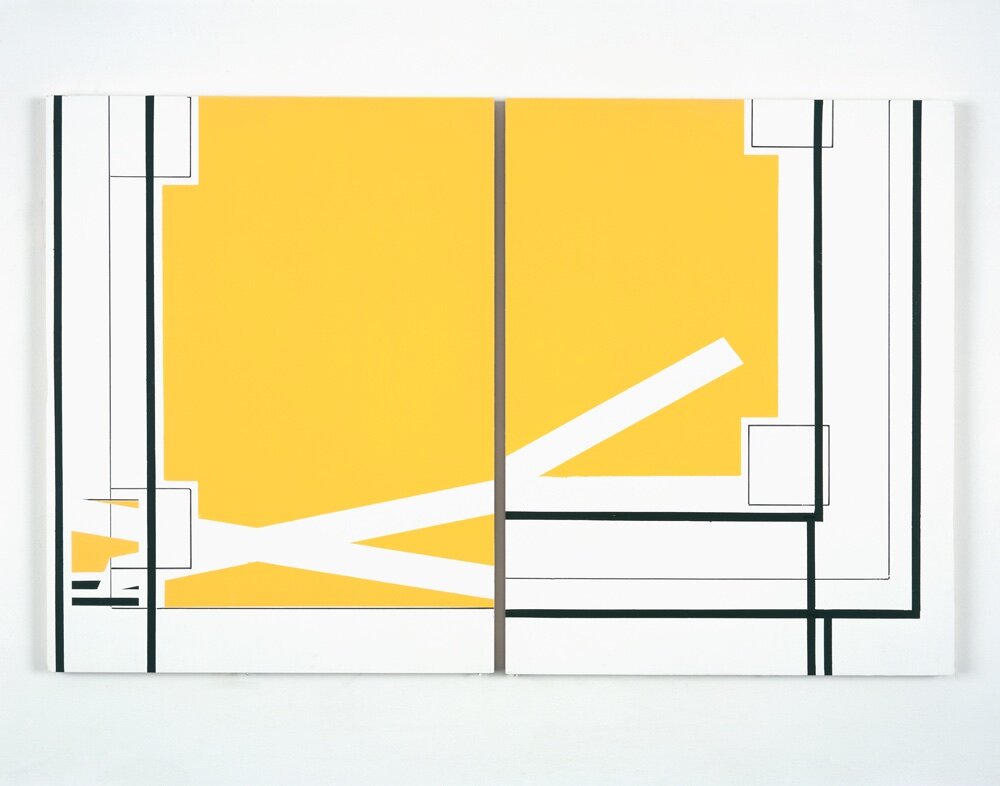
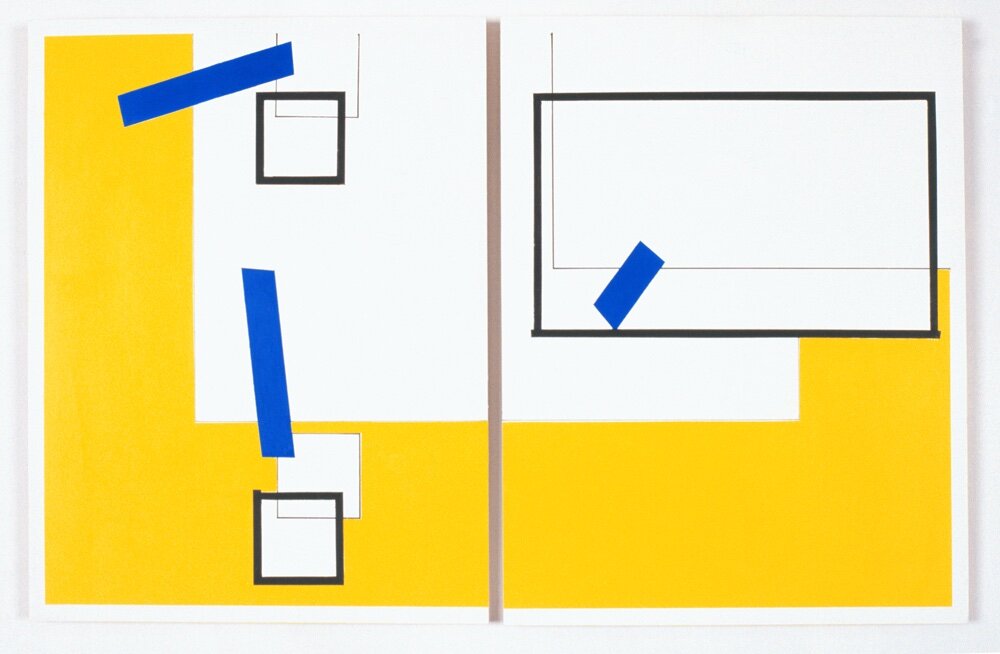
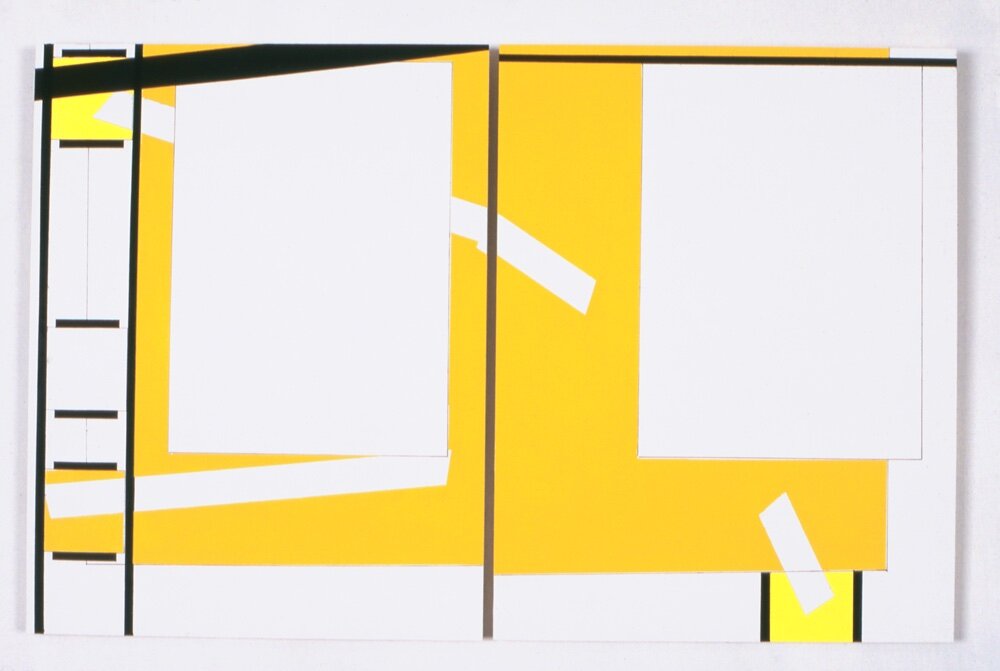
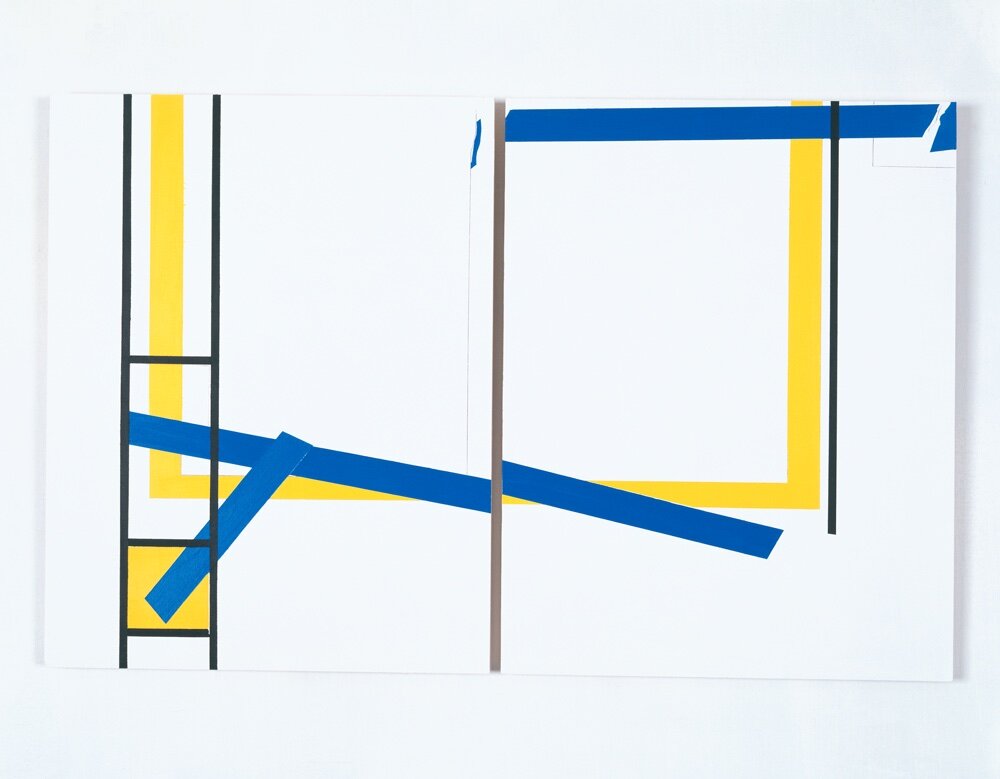
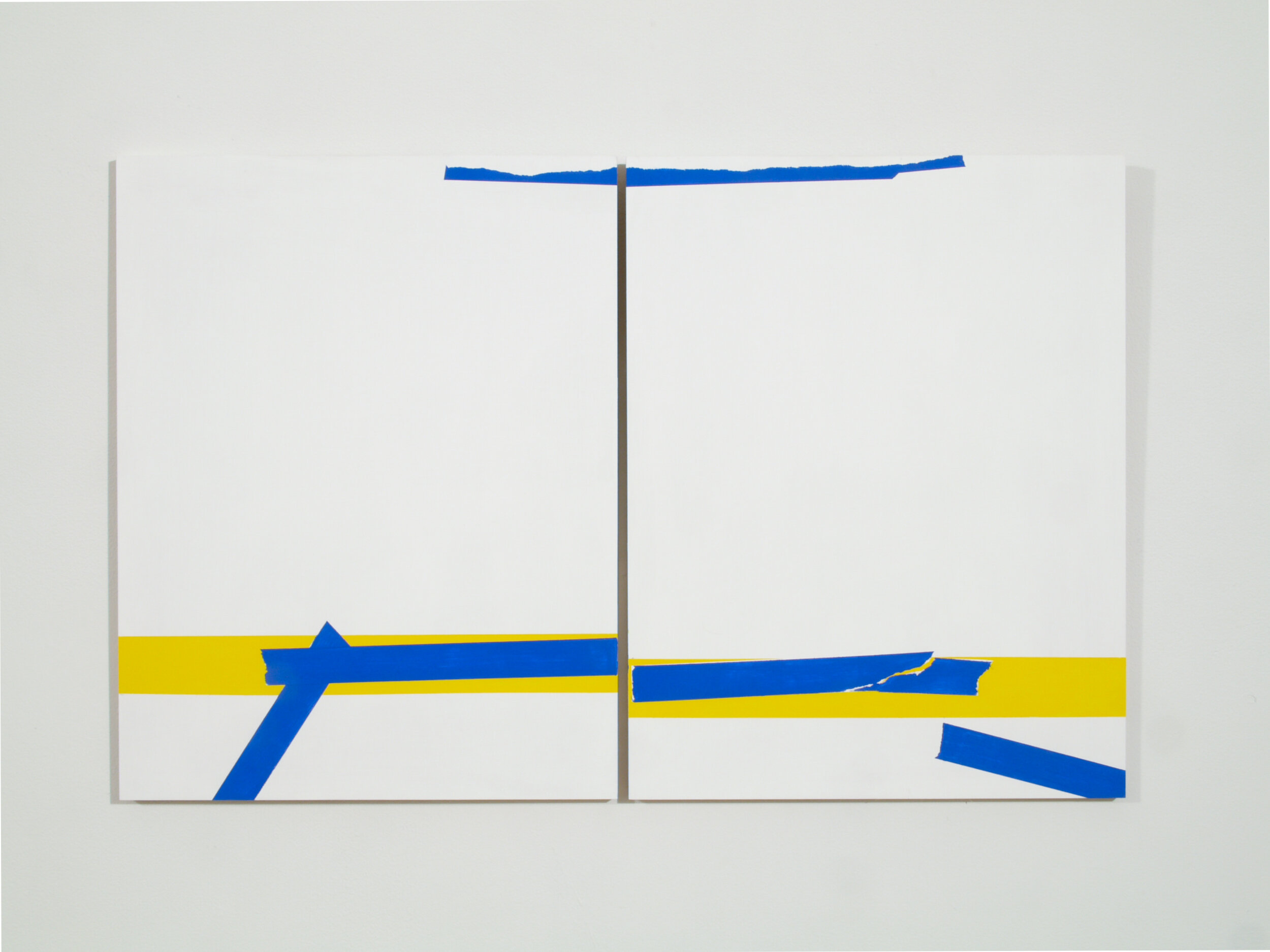

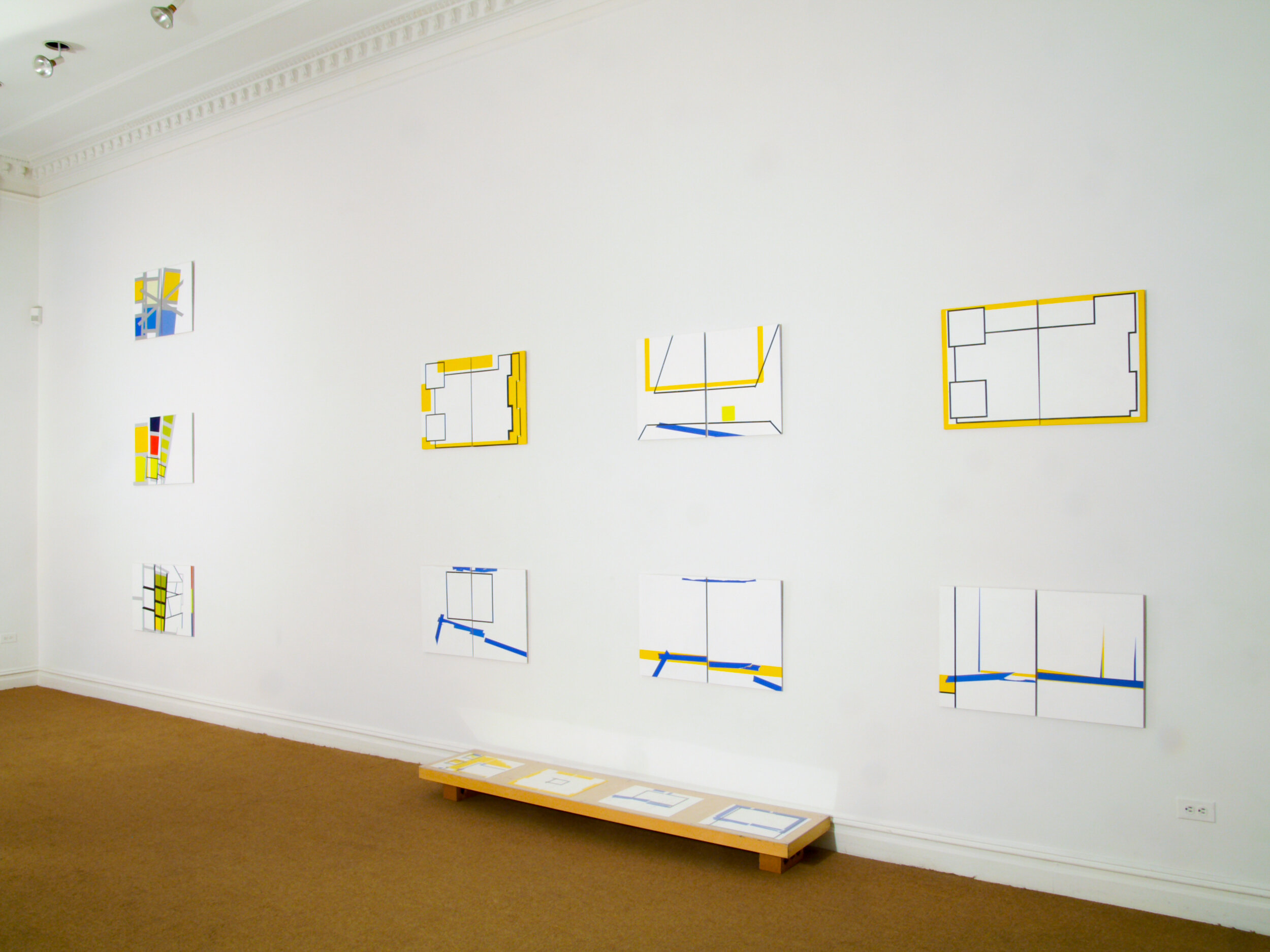












Works on Paper
As it takes on new meanings, the line is important tool for reorganizing the visual field according to different textual purpose; there are doubling embedded narratives, labyrinths or mazes as ways of doing, and legends standing apart as points of reference to a graphical thought played out. Shifting the frame itself allows for other modes of discourse, beyond: a semiotics of spatial relations. As a line grows broad, so may a concept broaden to comprehend a general topic, perhaps with greater ambiguity. Also relative to a legal frame is the propriety of property: What’s lost? What’s placed? If it is beyond the pale but seemingly deliberate, or if it is coincident with the boundary, it is mine or yours? Read as signs and symptoms, semiotic dispositions have engendered much legal dispute in traditional literatures.
Solo Online Exhibition, Emanuel von Baeyer - Cabinet
Some on exhibit at Baumgartner Gallery, 2006, and at Bjorn Ressle Gallery, 2008 –
http://marjoriewelish.com/Exhibitions-1.html
For reviews, see especially
Jennifer Riley New York Sun
Joe Fyfe, Art in America
Lilly Wei, Art in America
For essays on FRAME series, see Of the Diagram: The Work Of Marjorie Welish (Slought Foundation, 2003) the conference book devoted to the artist’s practice LINKS to WRITING ON ART—about the art
For his contribution, Thomas Zummer had thought at length, an excerpt of which is this:
“It is, of course, a question of framing. Of determining limit and extent, interior and exterior, sequence and succession, one and another. At the same time it involves the inevitable questions of reference, of ostensible signs of painting, of the process of manufacture and consent, of the politics of interpretation. Marjorie Welish’s work tampers with the place of painting. She is relentless, rigorous and generous (within reason), good humored, and in fact quite witty about it. For Welish, there is a logic of entailment—an implicative structuring pf the pace of painting which is constantly in movement towards a serial outside. “I use the term ‘serial’ here to indicate that the move to the outside enabled by these works is not a mere evacuation, nor completion, nor simple conscription of boundaries, edges or limits, but a suspension of the determinations interior and exterior, a suspension, that is to say, of the singularity of painting. There is a deferral, a play of identity ad difference set in motion between her works, which brings about an abnegation of the artifact as complete or self-sufficient.” From “The Dark Opacity of Meaning”.
